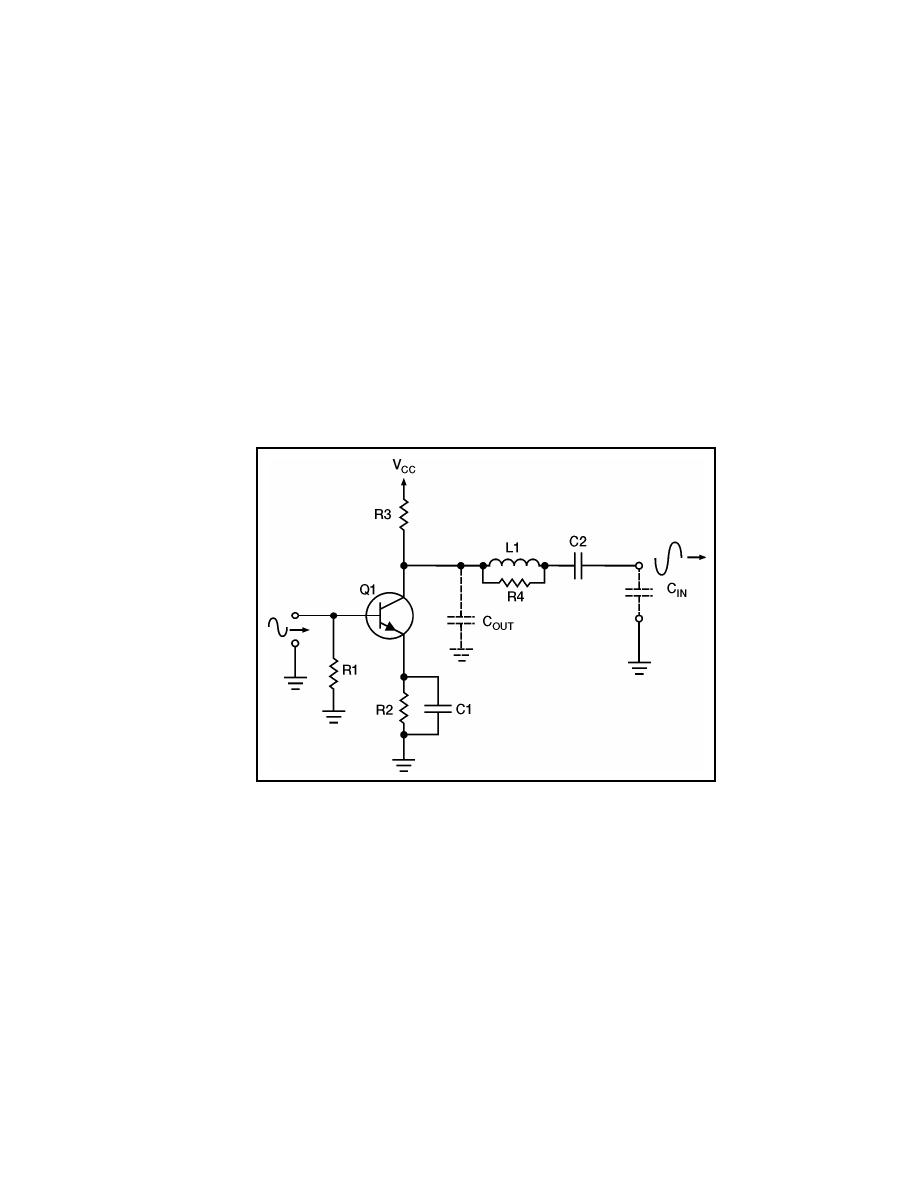
____________________________________________________ Video and Radio Frequency Amplifiers
use of peaking coils will increase the frequency response of an amplifier circuit. However,
it will also lower the gain of the amplifier.
Series Peaking
6-30. The use of a peaking coil in series with the output signal path is known as SERIES
PEAKING. Figure 6-5 shows a transistor amplifier circuit with a series peaking coil. In the
figure, R1 is the input-signal-developing resistor. R2 is used for bias and temperature
stability of Q1. C1 is the bypass capacitor for R2. R3 is the load resistor for Q1 and
develops the output signal. C2 is the coupling capacitor that couples the output signal to
L1 is the series peaking coil. It is in series with the output-signal path and isolates COUT
from CIN. R4 is called a "swamping" resistor and is used to keep L1 from
overcompensating at a narrow range of frequencies. In other words, R4 is used to keep the
frequency-response curve flat. If R4 were not used with L1, there could be a "peak" in the
frequency-response curve.
Figure 6-5. Series Peaking Coil
Shunt Peaking
6-31. If a coil is placed in parallel (shunt) with the output signal path, the technique is
called SHUNT PEAKING. Figure 6-6 shows a circuit with a shunt peaking coil. R1 is the
input-signal-developing resistor. R2 is used for bias and temperature stability. C1 is the
bypass capacitor for R2. R3 is the load resistor for Q1 and develops the output signal. C2 is
the coupling capacitor that couples the output signal to the next stage.
that it tends to couple the output signal to ground. L1 is the shunt peaking coil. While it is
in series with the load resistor (R3), it is in parallel (shunt) with the output-signal path.
6-33. Since inductive reactance increases as frequency increases, the reactance of L1
develops more output signal as the frequency increases. At the same time, the capacitive
23 June 2005
TC 9-62
6-9


 Previous Page
Previous Page
